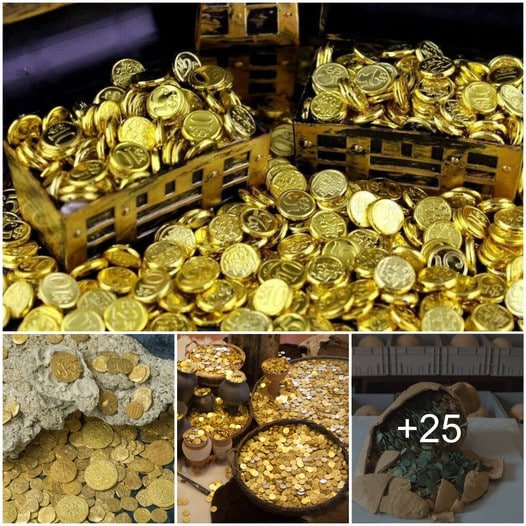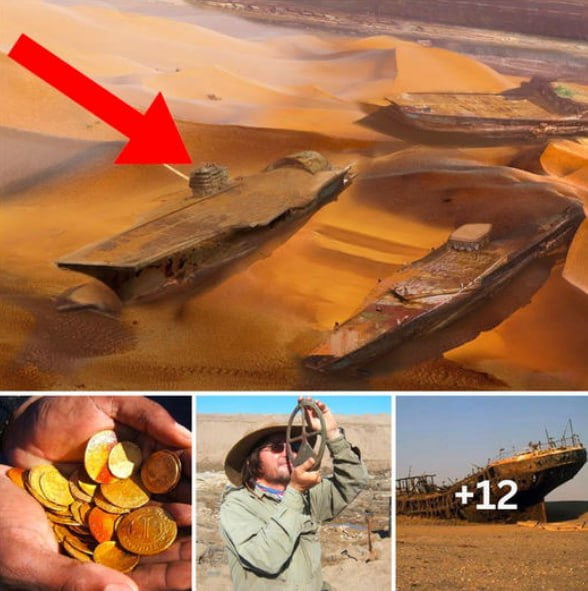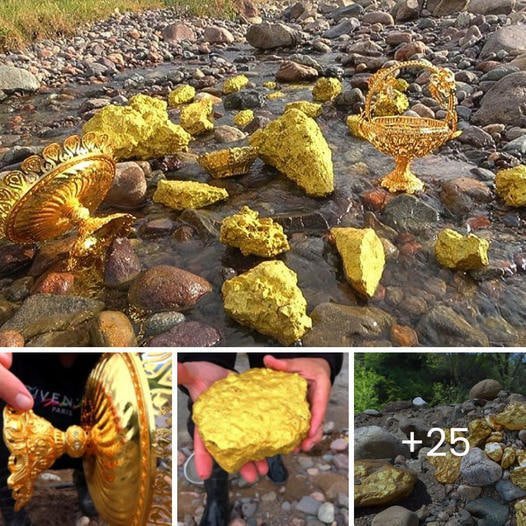In an exciting discovery, an amateur metal detector enthusiast in Norway has stumbled upon what is being called the most significant gold find of the century. Erlend Bore, 51, came across a treasure trove of ancient coins, pendants, rings, and gold pearls while exploring a farmer’s field on Rennesoey island near Stavanger in late August. Initially mistaking the objects for chocolate money, Erlend was shocked to learn their true value as some items dated back to the time of the Roman Empire’s decline. Armed with his metal detector, a new hobby he picked up on his doctor’s advice to be more active, Erlend unearthed a truly rare and exceptional collection of gold. Ole Madsen, director at the Archaeological Museum of the University of Stavanger, described the find as incredibly unusual and significant, dubbing it the gold discovery of the century in Norway.

A novice explorer named Erlend Bore smiles proudly in a photo next to a valuable gold treasure he stumbled upon using a metal detector on the scenic island of Rennesoy in Stavanger.

One out of the nine dazzling gold pendants discovered in Rennesoy, located in the beautiful region of Stavanger, Norway on September 6, 2023.

In August 2023, a treasure trove of gold artifacts, including a necklace adorned with coin-shaped pendants, was discovered by amateur archaeologist Mr. Bore. Today, we see a recreation of this exquisite necklace, showcasing its historical significance and beauty.

Researchers at work on the excavation site on Rennesoy Island in Stavanger, where a gold treasure was unearthed by an amateur archaeologist using a metal detector on August 30. Mr. Bore began exploring the mountainous island with his metal detector in August, initially finding some scrap before stumbling upon what he described as something ‘completely unbelievable’ – a treasure weighing just over 100 grams (3.5oz).
According to Norwegian law, items dating back to before 1537, and coins from before 1650, are considered state property and must be reported. Associate Professor Hakon Reiersen from the museum stated that the gold pendants, known as bracteates, date back to around 500 AD, during the Migration Period in Norway.
These intricate pendants, along with gold pearls, were part of an extravagant necklace crafted by skilled artisans and were likely worn by the elites of society. Professor Reiersen noted that this discovery is quite unique within a Scandinavian context, with no similar findings since the 19th century.
Specialist Professor Sigmund Oehrl also mentioned that around 1,000 golden bracteates have been found in Norway, Sweden, and Denmark, often depicting symbols related to Norse mythology. On the Rennesoy pendants, a horse with a hanging tongue and a slumped posture reflects illness and distress, symbolizing hope for healing and new beginnings.
The Archaeological Museum in Stavanger plans to showcase Mr. Bore’s discoveries, which include these remarkable gold artifacts. In another recent discovery, Israeli archaeologists revealed four rare Roman swords found in a cave overlooking the Dead Sea, tied to the Bar Kokhba Revolt from 132-135 AD. These weapons, believed to have been taken from Roman soldiers by Jewish rebels, remained hidden for close to two thousand years before being unearthed.

Hege Hollund, a conservator, showcases the discovery of gold at the Archaeological Museum located at the University of Stavanger in Norway on the 6th of September, 2023.

Discover gold at the University of Stavanger’s Archaeological Museum in Stavanger, Norway on September 6, 2023!

An image released by the Archaeological Museum displays one of the ten pearls that were discovered at Rennesoy in Stavanger, Norway, on September 6, 2023.

Professor Sigmund Oehrl is currently examining a fascinating gold discovery at the Archaeological Museum located at the University of Stavanger in Norway, on the 6th of September 2023. During the migratory period when these coins were unearthed in Norway, Germanic tribes were seen moving towards the north due to the invasion of the Huns in Europe. This led to the consolidation of power among these tribes under local chieftains, eventually resulting in the construction of Norway’s first forts. By the 8th century, these tribal groups had gained enough power to successfully conquer Britain. The oldest known Norwegian coin ever discovered, minted within Norway itself, is a penny attributed to Olav Tryggvason and dates back to the year 1000 AD. Throughout much of its history, Norway did not feel the need to mint its own currency and instead relied heavily on the importation of foreign coins.




